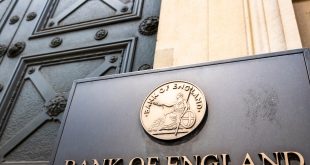The U.S. labor market is showing significant signs of strain in August 2025, raising alarm bells about the broader economic outlook and sending ripples through key trading assets. A combination of restrictive immigration policies, aggressive tariff measures, and persistent inflationary pressures has led to a sharp slowdown in job growth, with monthly nonfarm payrolls (NFP) averaging just 35,000 jobs from May to July, well below the estimated 100,000 needed to maintain a stable unemployment rate. The unemployment rate has crept up to 4.2%, and long-term unemployment is climbing, signaling a market in distress. These developments, coupled with global trade uncertainties and a cautious Federal Reserve, are reshaping investor sentiment and driving volatility across equities, bonds, commodities, and currencies. This report examines the labor market’s challenges, the associated economic risks, and their implications for major trading assets through the remainder of 2025.
Labor Market Slowdown: A New Normal
The U.S. labor market has entered a period of pronounced weakness, with July’s NFP report revealing just 73,000 jobs added, significantly below the consensus estimate of 110,000. Revisions to prior months were equally concerning, with May and June job growth slashed by a combined 258,000, bringing their respective totals to 19,000 and 14,000. This marks the weakest three-month period for job creation since the pandemic, averaging 35,000 jobs per month compared to 111,000 in the first quarter of 2025. The unemployment rate, while still relatively low at 4.2%, reflects a labor market in excess supply, where job creation is insufficient to absorb available workers. Notably, the unemployment rate for Black Americans has surged to 7.2%, up from a historic low of 4.8% in April 2023, highlighting deepening disparities.
A key factor driving this slowdown is the administration’s immigration crackdown, which has reduced the growth of the foreign-born population from 4% annually in 2022-2024 to an expected pre-pandemic norm of 1.3%. This shift is projected to lower trend employment growth to approximately 100,000 jobs per month, with 70% driven by native-born workers and 30% by foreign-born workers. However, risks tilt toward even lower growth if immigration policies tighten further or if native-born workers remain on the sidelines, as many did during the pandemic. The labor force participation rate, which fell to 62.2% in July, its lowest since 2022, underscores this trend, exacerbated by immigration restrictions deterring undocumented workers.
Long-term unemployment is another red flag. The number of individuals jobless for 27 weeks or more rose to 1.8 million in July, accounting for 24.9% of the unemployed, the highest share since February 2022. This increase suggests employers are becoming more selective, possibly due to uncertainties surrounding tariffs, which are estimated to add $1,219 annually to household costs. The median duration of unemployment edged up to 10.2 weeks, and the number of new labor market entrants seeking their first job jumped by 275,000 to 985,000, indicating heightened barriers to entry. These trends point to a labor market struggling to regain its footing, with implications for consumer confidence and spending.
Economic Concerns: Stagflation Risks and Policy Challenges
The labor market’s deterioration is fueling fears of stagflation—a toxic mix of tepid growth and persistent inflation. Domestic demand grew at its slowest pace in two and a half years in Q2 2025, reflecting weakened consumer and business activity. Tariffs, with effective rates rising from 2% to around 18%—the highest since the 1930s—are driving up goods prices, squeezing household budgets, and complicating supply chain decisions. Economists warn that these policies, combined with immigration restrictions, are denting labor market resilience, which has been a cornerstone of economic stability.
Inflation remains a stubborn issue, with import duties contributing to price pressures. Annual wage growth, while still elevated at 3.9%, has cooled slightly, offering some relief to the Federal Reserve, which is grappling with balancing growth and price stability. However, the Fed’s decision to hold rates steady at 4.25%-4.50% in July reflects caution, as uncertainty over tariffs’ inflationary impact persists. Two dissenting votes for a rate cut at the July meeting—the first such split since 1993—signal growing unease among policymakers. Markets now assign a 90% probability to a September rate cut, up from 81% post-July jobs data, reflecting heightened expectations for monetary easing.
The specter of a recession looms larger, with the labor market’s cracks amplifying broader economic vulnerabilities. Declining federal government employment, down 84,000 since January 2025, and rising Worker Adjustment and Retraining Act (WARN) notices for layoffs indicate further softening. While layoffs remain near historic lows, reduced hiring and quitting rates are creating a stagnant environment for job seekers, particularly in industries like manufacturing and professional services, which saw job losses in July. Healthcare and social assistance continue to drive gains, but opportunities are narrowing, limiting broad-based growth.
Impact on Key Trading Assets
The labor market’s woes and the associated economic uncertainties are reshaping the outlook for major trading assets in August 2025 and beyond. Below is an analysis of their performance and trajectory through the year’s end:
Equities
The weak jobs report has rattled equity markets, with the Dow, S&P 500, and Nasdaq dropping 1.1%, 1.2%, and 1.3%, respectively, in early trading on August 1. Investors are increasingly wary of higher tariffs and a softer labor market, which threaten corporate earnings and consumer spending. The prospect of Fed rate cuts offers some optimism, as lower borrowing costs could support valuations, but uncertainty over tariff impacts and potential stagflation keeps markets volatile. Technology and consumer discretionary stocks, sensitive to economic growth, face downward pressure, while defensive sectors like utilities and healthcare may see relative strength. A new tax bill providing fiscal stimulus could bolster equities into 2026, but near-term turbulence is likely.
Bonds
U.S. Treasury yields have reacted sharply to labor market signals. The 10-year Treasury yield, expected to fall to 4.25% by Q4 2025, dipped as markets priced in a higher likelihood of Fed rate cuts. Bonds, particularly the iShares Core U.S. Aggregate Bond ETF, have gained traction as investors seek safety amid economic uncertainty. The Fed’s dovish tilt, with anticipated 25-basis-point cuts starting in Q3 2025, supports bond prices, but persistent inflation risks could cap upside potential. Investors are closely monitoring upcoming ISM PMI data and tariff developments, which could influence yields.
Commodities
Gold has surged as a safe-haven asset, driven by labor market weakness and tariff-induced inflation fears. Posts on X highlight gold’s rally on safe-haven flows following the July jobs report. With stagflation risks rising, gold’s appeal is likely to persist, potentially testing $3,400/oz by year-end if economic conditions deteriorate further. Other commodities, such as oil, face mixed pressures: tariffs could elevate costs, but slower economic growth may curb demand, keeping prices range-bound.
Currencies
The U.S. dollar has weakened as expectations for Fed rate cuts grow, with GBP/USD stabilizing after hitting a low of 1.3141. The labor market’s softness and tariff uncertainties are weighing on the dollar, while currencies like the euro may see strength if the Fed cuts rates faster than other central banks. The dollar’s trajectory hinges on Fed actions and trade policy clarity, with support levels near 1.3000 for GBP/USD and resistance at 1.3378. A hawkish Fed surprise could bolster the dollar, but the current outlook favors downside pressure.
Outlook for the Remainder of 2025
Looking ahead, the U.S. labor market’s challenges will continue to shape economic and market dynamics. If job growth remains below the 100,000 threshold, unemployment could rise further, potentially pushing the Fed to accelerate rate cuts. However, persistent inflation, driven by tariffs and wage pressures, may limit the Fed’s flexibility, raising the risk of stagflation. Equities face near-term headwinds but could stabilize if fiscal stimulus and rate cuts materialize. Bonds and gold are likely to benefit from safe-haven demand, while the dollar may weaken unless trade policies stabilize. The interplay of immigration restrictions, tariffs, and monetary policy will be critical, with markets remaining sensitive to upcoming data releases, including August’s employment report on September 5, 2025.
The U.S. labor market’s slowdown, driven by restrictive immigration policies and tariff-induced uncertainties, is casting a shadow over the economy. With long-term unemployment rising and job growth faltering, the risk of a broader economic downturn is growing. Investors are navigating a volatile landscape, with equities under pressure, bonds and gold gaining favor, and the dollar facing headwinds. As 2025 progresses, the Federal Reserve’s response and the evolution of trade policies will be pivotal in determining the trajectory of both the economy and key trading assets.

 Noor Trends News, Technical Analysis, Educational Tools and Recommendations
Noor Trends News, Technical Analysis, Educational Tools and Recommendations




